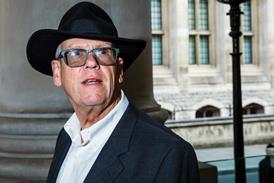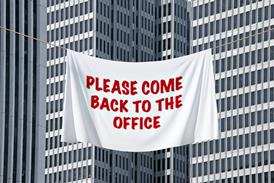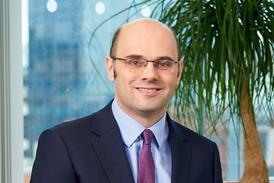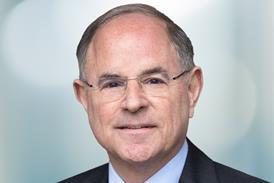In the second of three articles tracing the history of ethics and the legal profession, Mark Humphries recalls a time when accusing a lawyer of being a ‘daffy-down-dilly’ was as serious as accusing a doctor of killing a patientIn the period 1483–1558, principles of professional conduct above and beyond mere honesty began to be formulated for the bar by the Court of Common Pleas, the main common law courts of the time.
The principal evidence of this formulation consists of three speeches to the new serjeants at law during the reign of Henry VIII in which the lord chief justice would explain the ethics of the profession and the high standards of conduct expected of practitioners. A number of specific requirements can be identified from these speeches:
- To assist the poor and oppressed without reward;
- To give counsel to anyone who should seek it – one of the earliest statements of what is now called the ‘cab rank rule’ comes from the Scottish Court of Session in 1532: ‘No advocate without very good cause shall refuse to act for any person tendering a reasonable fee, under pain of deprivation of his office of advocate’;
- To dissuade clients from pursuing unjust causes and to advise them to abandon causes if it appeared that they were in the wrong;
- To deal with business expeditiously and not to prolong it for gain;
- To keep clients’ business secret (by 1647, the allegation that an attorney ‘revealed the secrets of my cause’ was considered so shocking that it was actionable for slander);
- To avoid corruption by money or favour, not merely in deceiving clients but also for instance in pretending to be ‘blind’ – unable to assist in a worthy cause;
- To ‘stick with hand, foot and nail’ to the truth, never pretending that a wrong is right; and
- To do nothing contrary to good conscience.
Concepts such as the importance of loyalty and confidentiality would no doubt have evolved and developed from those discussions, influenced both by Christian religious education as well as developing humanist learning, such as the lawyer’s duty to justice. The academic Jonathan Rose suggests that senior lawyers, as role models, may well have influenced the development of ethical sensitivities.
The similarities between the ethics of the lawyers practising before the church courts and those of the lawyers practising at the common law bar are no doubt explained partly by the fact that principles of ethics, in common with substantive legal principles, were originally based on biblical precepts. By way of example, the medieval ethical principle that it was wrong knowingly to defend an unjust cause can be traced to the writings of the theologian St Thomas Aquinas. St Thomas taught that lex humana was subordinate to the eternal law of God. Additionally, it appears that early lawyers practised in both the ecclesiastical and common law courts and that, although the two legal professions developed separately, there would no doubt have been some cross-fertilisation between them.
The king’s serjeants, who were appointed from the ranks of the serjeants at law and represented the Crown in important criminal and civil cases, were not allowed to appear or advise against the Crown except in certain limited circumstances; and then, if the verdict went the other way, they could change sides and ‘pray judgment for the king’.
Conflicts of interest remained a very serious matter. There are a number of reported defamation cases in the 16th century containing judicial pronouncements suggesting that accusing a lawyer of being an ‘ambidexter’ or, colloquially, a ‘daffy-down-dilly’ was reckoned to be as serious a charge as to accuse a doctor of killing a patient.
Sir Nicholas Bacon, the Lord Keeper of the Great Seal in the reign of Elizabeth I, suggested in 1559 that it was improper to ‘offer jeofail or error’ – to take technical points after a hearing – although this may not have been a universally held opinion.
1 Attorneys and solicitorsOn the other side of the profession was the attorney at law who was in some ways the forerunner of the present day solicitor, although the office of attorney was abolished in 1875 as a result of the Judicature Acts. The Ordinance of 1292 had recognised attorneys as a separate part of the legal profession, confirming their monopoly on the right to practise in the courts of the Common Bench, and may well be the origin of solicitors being officers of the court. Attorneys dealt with procedural matters and managed litigation on behalf of their clients. They began to develop similar professional standards to those adopted by the serjeants under the supervision (in their capacity as officers of the court) of the judges of the Common Pleas.
There were in fact also ‘solicitors’, practising in Tudor England, who were not necessarily trained lawyers of any description, although some of them were members of one of the inns of court. It was not until the 19th century that the expression ‘attorney’ was dropped in favour of the term ‘solicitor’.
The earliest surviving form of the attorney’s oath dates from the mid 1550s, although it is known that the oath was in use as early as the 1520s and possibly even before that. The oath contained the following requirements: ‘You shall do no falsehood nor consent to any to be done in this court; and if you know of any to be done you shall give knowledge thereof to my lord chief justice and other my masters his brethren, that it may be reformed. You shall delay no man for lucre or for malice. You shall increase no fees, but be content with the fees accustomed. You shall plead no foreign pleas nor sue any foreign suits unlawfully to hurt any man, but such as shall stand with the order of the law and your conscience. You shall seal all such process as you shall sue out of this court with the seal thereof or see the king’s majesty or my lord chief justice satisfied for the same. Also, you shall not wittingly sue or procure any false suit, nor give aid or counsel to the same, on pain to be expelled from this court for ever. And further use yourself in the office of an attorney within this court according to your learning and discretion. So help you God etc.’
An oath was also taken as early as the 15th century by court officers in which they were required to use every effort to hinder falsehoods and reveal them to the court.
In the attorney’s oath can be seen an early reference to the disciplinary consequences of falling short of the required standards of ethical behaviour. The penalty for deliberately making or assisting in making false claims was permanent expulsion from the court and, thereby, legal practice. An attorney expelled from the court after formal investigation on oath was said to be ‘forejudged’ and it was customary for the penalty to be physically enforced by throwing the attorney over the bar of the court. This gave rise to the colloquial expression ‘to turn up one’s heels’.
Some form of suspension from practice was imposed while a complaint of professional misconduct against an attorney was investigated and in serious cases the investigation could be by a grand jury of attorneys. It is believed that less serious offences such as continuing with a matter without good cause were punished by a fine or a term of imprisonment.
As with all lawyers, the court regulated the professional conduct of attorneys. Up to the 13th century a litigant was required to appear in person and to plead his case. Practising attorneys became more commonplace during the 13th to 15th centuries. However judges appear always to have exercised an inherent power to control the admission of lawyers to practise in their courts and to sanction them when they misbehaved. (Indeed, the overriding power to refuse to hear a particular advocate has recently been placed on a statutory footing in sections 27(4) and (5) of the Courts and Legal Services Act 1990, subject to the requirement to give reasons for exercising the power.) It appears that the disciplinary function was carried out publicly, at least in serious cases.
In 1558, the court summoned all the attorneys and court officers to hear the sentence of forejudging passed on a senior attorney of 40 years’ standing ‘to the terror of other offenders’.
2 The litigation and advocacy divideHistorically, barristers had exclusive rights of audience in the higher courts including the Crown courts, High Court and Court of Appeal, although solicitors have always had rights of audience in the lower courts, including the magistrates’ courts and the county courts and, in interim matters, in the higher courts. Barristers could not generally appear in court, except on dock briefs, unless instructed by an attorney (or, later, a solicitor). They had to be attended in court by a member of the solicitor’s practice.
Barristers expected their ‘professional clients’ (solicitors) to visit them for ‘consultations’ at their chambers, in the manner of a consultant doctor, and negotiations over fees were conducted by barristers’ clerks and not by barristers themselves who regarded such matters as unprofessional. In the early 18th century, the notion developed that barristers received an ‘honorarium’ rather than ‘merces’.
In recent times many of these traditions of the bar have been swept away. The legal profession, spilt into two branches for several centuries by historical accident, is now in a period of uneasy transition.
In 1990, all solicitors were given full rights of audience in all courts upon qualification, albeit with restrictions on the exercise of some of those rights until the grant of a higher courts qualification following training and monitored experience. Solicitors began to appear in the higher courts in 1994.
Barristers are no longer prevented from visiting solicitors at their offices and may freely accept instructions from professional persons other than solicitors who have been approved to instruct barristers directly, or even, subject to certain restrictions, directly from a lay client.
The profession of barrister is undergoing a transformation to accommodate modern legal practice while continuing to provide a service to the public specialising in advisory work and advocacy. At the same time, solicitors are beginning to take advantage of the increased work opportunities made available by the relaxation of restrictions on their rights of audience.
- Part 3 of this series, published online next week, will analyse the development of ‘modern’ ethics and professional regulation.
Mark Humphries has 25 years’ experience of contentious legal practice. Until recently a litigation partner and head of advocacy at Linklaters in London, he is now the director of his own commercial disputes firm Mark Humphries Ltd. He is a past chairman of the Solicitors Association of Higher Court Advocates

























No comments yet